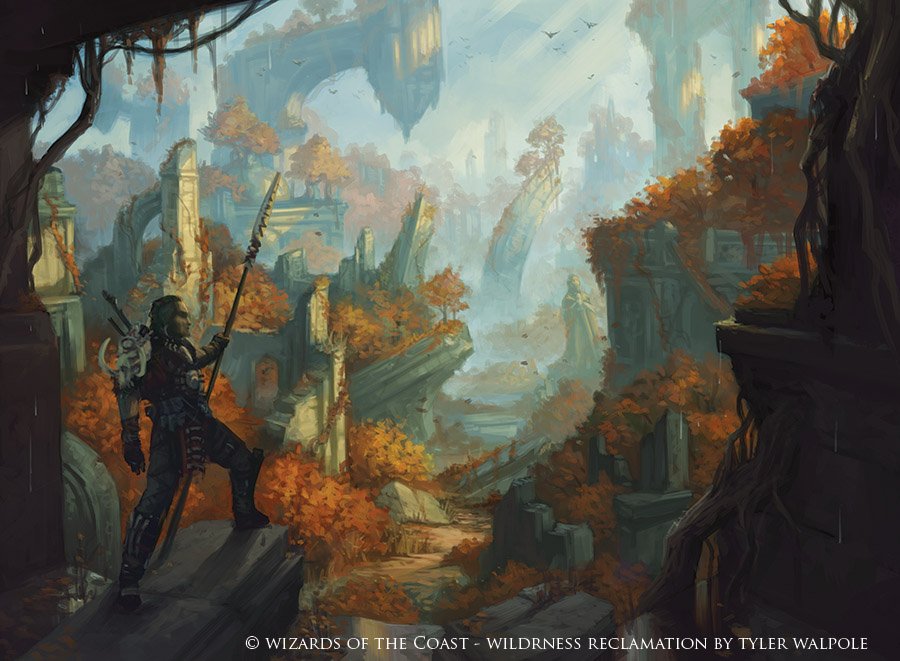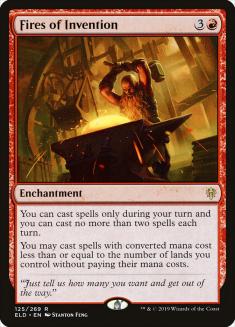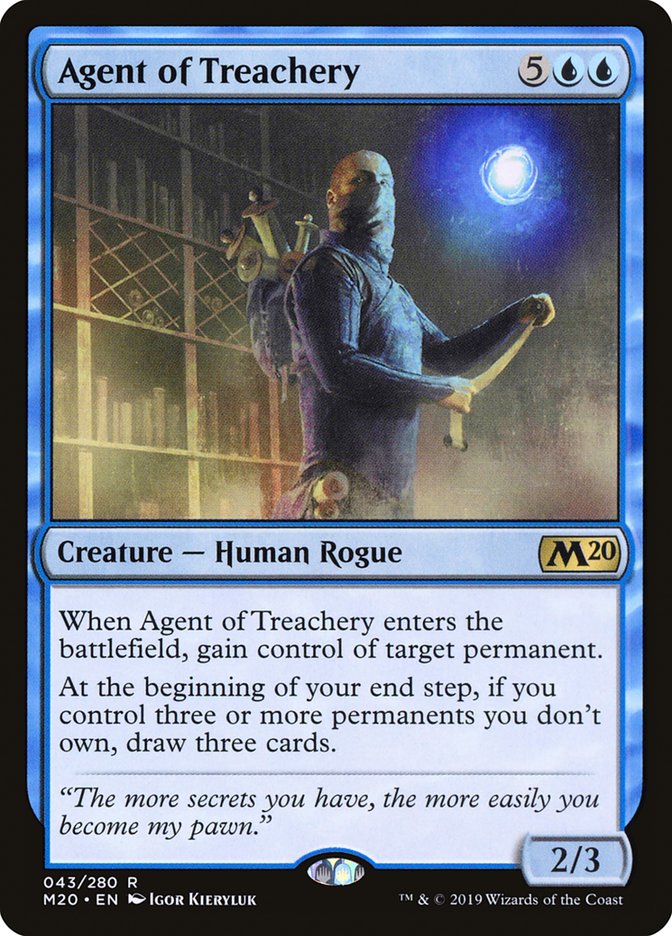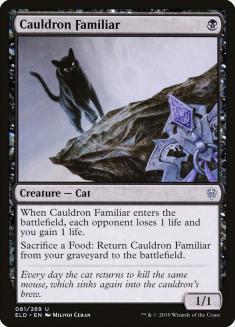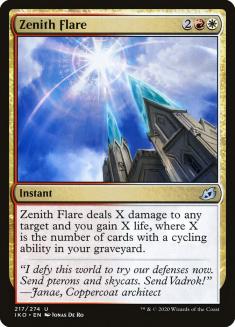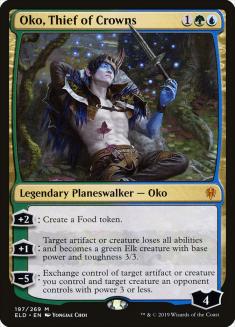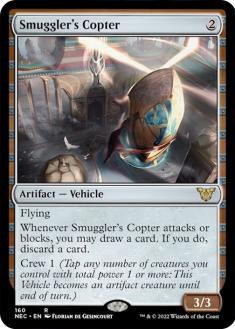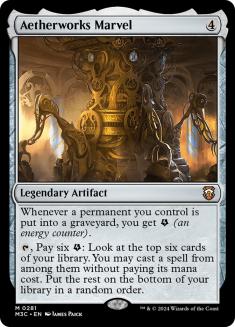Yesterday, Wizards of the Coast (WotC) announced that it would update the Banned List for Standard and Historic, the two primary Constructed formats on Magic Arena (Arena). In addition, they said this update will address how the companion mechanic works. That’s huge news, as we all know just how powerful and game-changing companions have been. Today’s article will examine the potential problems in Standard, as well as speculate on the changes coming to companions.
You either love them or you hate them, but companions have altered the face of Magic. Lurrus of the Dream-Den was wildly dominant in both Legacy and Vintage, and continues to be a force in Modern and Pioneer. When you get to Ikoria Standard, things start to get a little stickier. The banning of Lurrus from Legacy and Vintage a few weeks ago has virtually unlocked each format as “playable” again, and I’ve recently been dipping my toes back in the Legacy waters, so expect some solid Legacy content in the coming weeks.
I only bring this up because a potential change in the companion mechanic might actually make Lurrus of the Dream-Den palatable in older formats. Depending on how they change the mechanic, it might be okay to unban it in either Vintage or Legacy, but we’ll just have to wait and see before we open that can of worms.
Burn It Down
I haven’t played a single game of Historic, so I’ll refrain from commenting on its health. But where do we start with Standard? It seems like everyone is complaining about one thing or another, but there are a few powerful tools and engines that keep making the rounds. Suffice it to say that when Brad Nelson stops playing Standard, there’s a major problem, so taking a blowtorch to the format might actually be better than letting things lie. Remember when people thought banning Hydroid Krasis would solve everything?
My biggest gripe with Standard, and why I try to stay away from it in general, is that it seems like interaction is being pushed aside in favor of flashy, swingy mechanics and effects. I remember having some of the richest Standard formats in a long time when Guilds of Ravnica was released at the end of 2018. Did you know that Arclight Phoenix is still legal? What happened to make it go from excellent to unplayable?
Synergy no longer matters, which creates an arms race to do the most powerful thing in the most efficient manner possible. Games are not sculpted and do not come to satisfying conclusions. Interaction is ignored by cards that are unable to be countered, killed, or even discarded. Every permanent generates another body or virtual card, which makes spot removal a joke. The most recent surge in Agent of Treachery has only become unacceptable because stealing your opponent’s permanents is one of those “unfun” things that everyone hates. It’s not like a super-early Nissa, Who Shakes the World into an 8/8 Hydroid Krasis is any less messed up. It’s just not quite as broken as Fires of Invention and Agent of Treachery right now.
If I told you the heart of the problem was something other than Agent of Treachery, what card would you think I’m talking about?
The planeswalkers with static abilities from War of the Spark altered Magic in a fundamental way across every Constructed format. Much like companions, they see play everywhere and have a huge effect on virtually any game where they resolve. The best ones are Narset, Parter of Veils and Teferi, Time Raveler because their static abilities are devastating to a bunch of strategies while also drawing a card and/or altering the battlefield in a meaningful way.
Teferi, Time Raveler was a mistake. The tempo gained from bouncing a creature and drawing a card cannot be emphasized enough. The static effect also straight-up bricks an entire subset of cards that I enjoy playing. In fact, turning Magic into Hearthstone by preventing your opponent from playing spells on your turn is actually quite bad! It doesn’t help that it invalidates powerful mythic rares like Finale of Promise.
Teferi has shaped Standard since its introduction. Punishing people for playing a lot of instant-speed cards is such a huge feel-bad already, but the additional punch in the gut from bouncing your best permanent and drawing a card while staying on the battlefield is, frankly, insulting.
If they banned Teferi in every format, I don’t know anyone who would really miss it.
Fires of Invention is an engine card. It generates an absurd amount of mana over the first few turns it’s active, and even allows for some extra mana generation from cards that skirt the casting rule. The addition of Shark Typhoon to Standard only exacerbates the problems already inherent. Much like Lukka, Coppercoat Outcast, Shark Typhoon abuses the engines around it while providing the pilot with a very powerful tool. It’s not necessarily the problem, but it certainly looks bad when it does its thing.
The natural foil to cards like Fires of Invention used to be counterspells. Tempo decks like Mono-Blue or Simic Flash prey heavily upon opponents that operate at sorcery speed. In a perfect world, those types of decks would punish Fires of Invention, creating a natural harmony between archetypes. A “rock-paper-scissors” metagame is often preferable to whatever it is we have now, where everyone is just ignoring each other and trying to do the most busted thing. Because of Teferi and Mystical Dispute, it becomes much more difficult to use counterspells to contain such powerful effects. And when everything says “draw a card,” you can’t really kill stuff and keep up. So instead, everyone starts ignoring each other.
At the end of the day, Fires of Invention is just a mana engine but one that is easy to exploit because of the surrounding cast. The difference in games where you cast Fires of Invention on the fourth turn versus drawing it on the ninth or tenth is wide. If you can’t contain an early Fires of Invention by killing it or countering it, the advantage gained can be utterly overwhelming. One big problem with cards like Fires of Invention is that it replaces the mana spent on the turn you cast it, creating a tempo black hole for the opponent even if they kill it with a Disenchant effect.
There’s no tension. There’s no counterplay. There’s no punishment for casting your spell if your opponent has an answer. Cards that create tension when you untap on your next turn no longer exist in Standard, which is a real shame. The absence of tension is what makes Standard feel so heartless. Few games are close, and the few that are close are only that way for a turn or two before one person gains an overwhelming advantage or straight up wins. Fires of Invention isn’t the only card doing this, but it’s the one everyone is talking about right now because of the insufferable snowball advantage it can create.
Wilderness Reclamation, like Fires of Invention, is an engine card that allows you to recuperate your mana spent immediately. I know it was one of the most disgusting cards to pair with Nexus of Fate, but I don’t think it’s a coincidence that Nexus of Fate is almost never a problem until you start to pair it with Wilderness Reclamation. The mana generation is nutty, and the ease at which you crush opponents while spending virtually no mana as an initial investment is ridiculous.
I have defended Wilderness Reclamation in the past under the caveat that I know it’s too good, but it’s different enough and promotes certain unique cards enough that I almost feel bad suggesting it should go. My original brews featuring Expansion // Explosion were some of the most fun games of Magic I’ve ever played, but I can also put my personal biases aside for the health of the game. If Teferi gets banned, there’s no possible way that Wilderness Reclamation should exist.
Stealing permanents for seven mana is cool, and has never really been a problem in the past. I think the real issue at the moment is that cheating this threat onto the battlefield is trivial. Both Lukka, Coppercoat Outcast and Winota, Joiner of Forces produce a cheap Agent of Treachery with ease. This problem is exacerbated by the existence (and annoyance) of Yorion, Sky Nomad, which can blink them a bunch of times and create a vortex from which there’s little hope of escape.
And there it is: the vortex; the swirling pool that every game of Standard becomes as you struggle to dig yourself out. Not only is it virtually impossible to swim against the tide, but the sense of dread you feel while sinking is nightmarish. There’s no possible way that banning Agent of Treachery is the correct move. There’s a fundamental problem with your game and format when a seven-mana creature is the end-all be-all. I would rather them ban any and all ways to cheat Agent of Treachery onto the battlefield than banning it outright.
There will always be another Griselbrand. You have to attack the enablers.
I don’t think any card in Magic should require this many clicks to use. Alongside Witch’s Oven, Cauldron Familiar is the most obnoxious card I have ever played with or against. Ever. That’s not hyperbole. Cat/Oven is one of the big reasons I can’t stand playing Standard. So many triggers and abilities and clicks and…you get the idea. There’s something I like to refer to as “decision overload,” where you start to make decisions seemingly at random because there are far too many little things to think about. When a deck requires as many clicks as Cat/Oven, the time in the game where you start to feel “decision overload” is almost immediate.
It’s annoying, time-consuming, and really powerful. It’s not quite as flashy as some stuff, but it’s certainly something I would consider removing due to sheer annoyance.
Cards like Zenith Flare, historically, have never been able to hit an opponent. This type of effect is outrageous against aggressive decks, acting as both a finisher and spot removal for a deck that gets to otherwise play a control strategy. Is it too good in the current format? Probably not, but there’s a chance it becomes unbeatable if they take out the other major players. While I’m on the fence, I wouldn’t be unhappy to see it go.
At least stuff like Flourishing Fox creates some tension, even if it does get out of control in a hurry. Zenith Flare is just breaking an unwritten rule. This type of effect shouldn’t be able to kill your opponent. It’s a lot like a four-mana Approach of the Second Sun, in that the second copy almost always kills the opponent. The difference is that it costs about half the mana and can be used as utility until it’s time to win the game. In some ways, it feels like Expansion // Explosion in its utility, but costs nowhere near the same mana investment to finish your opponent off.
Recursion is annoying. Not everything needs to draw a card. Another one I’d like to see unprinted. Simic should be more than a collection of creatures that draw a card and gain life.
If they change the companion mechanic, I doubt either of these will need to be banned. But how will they change it? I have a few ideas.
Changing Companion Changes Everything
One underlying side effect of this announcement is that all formats are going to change, not just Standard and Historic. It’s no secret that the companions warped every Constructed format where they’re legal. Having an eighth card in your opening hand is pretty nutty, and especially so when that card does something powerful and/or proactive. Both Lurrus and Yorion have made huge waves everywhere because they do something immediate, and the deckbuilding “drawbacks” were negligible. It’s also possible that WotC wildly underestimated how easy the restrictions were to circumvent. Turns out that having an 80-card deck wasn’t that big of a deal. And the older a format is, the easier it becomes to find redundancy in design over the last 25 years!
There’s also been a recent surge in cards printed that are efficient and replace themselves. When every permanent you play says “draw a card,” Yorion just needs a few nonland permanents to gain outrageous value. This problem is enhanced by the existence of cards like Arcum’s Astrolabe, which give you the ability to play three or more colors with ease while replacing themselves and making Yorion a true monster. The trick to making Arcum’s Astrolabe degenerate is having some way to turn the actual card into more than itself. Oko, Thief of Crowns was outrageous in Modern because you had so many “do-nothing” artifacts that drew a card or did something once and would usually just sit on the battlefield, waiting for Urza or Oko. Yorion is similar in how it exploits Arcum’s Astrolabe.
That’s the real dagger if you ask me. Forcing people to interact with cheap permanents that draw a card is obnoxious. Expecting people to Abrupt Decay an Arcum’s Astrolabe is unfair. Cheap cards like that should not be “must-kills” because of a companion, yet here we are. The effect we then see is Yorion being the best option for midrange in any format by a country mile. Considering how old Magic is and how many powerful cards exist in Legacy and Modern, it’s strange to see one or two cards completely and utterly shape how we approach Magic as a whole. It’s almost impossible to beat Yorion in a fair-on-fair matchup without resorting to some tomfoolery. It’s also no surprise to me that almost every viable deck in Pioneer is “midrange with a slice of combo.” How else can you expect to beat Yorion other than going under it (red with Lurrus) or going way over the top (Inverter/Oracle or Ballista/Heliod).
Changing how companions work could drastically alter how we see Magic as a game. The last month has been pretty draining, as playing against companions in 80% or more of my matches means most games will play out in a similar fashion. Lurrus decks will never run out of steam, and Yorion decks will grind you to dust. If your opponent isn’t playing one of those two companions, chances are they’re playing a combo deck. That’s it. That’s Pioneer. Regardless, changing how the mechanic works will shake up every format and Monday can’t come soon enough.
My question is: how exactly can they change the companion mechanic while still keeping the flavor of companion alive? As I’ve written about in the past, the only “bad” thing about companion, in my opinion, is that two of them are significantly better than the rest and there’s not nearly enough diversity in choices. As a new mechanic, the first ten were awesome. They created interesting play patterns and some cool deckbuilding exercises. However, Yorion and Lurrus should probably be banned in every format if the current companion rule stays.
It’s not like people are out here yelling for Keruga’s head. Lurrus and Yorion are both miles above of the rest, but most of them do see some amount of play. I’m not stoked about creatureless control decks getting to play Kaheera, the Orphanguard for free until the end of time. I’m simply not enthusiastic about any deck getting a “freebie” companion at all. The restrictions for having an eighth card in your opening hand should be high.
Here are my suggestions for potential changes to the companion mechanic, and how they might impact the game of Magic as a whole.
1. Optional forced mulligan to put companion into your opening hand.
This makes it so your opponent can make you discard the companion. This makes it so you don’t get an eighth card. This makes companions fair. Also, I like the “may” ability because some hands are actually perfect without your companion!
As I’ve said before, I’m not unhappy with repetitive play. Most card games have some sort of “flood control” in order to keep things interesting. If one person is casting stuff and the other isn’t, I wouldn’t exactly call that a fun experience.
Having an eighth card in your starting hand changed the game. It made mulligans much less taxing. It also created a focal point for a game that both players knew about and could build toward or defend against. Having the companion mechanic sacrifice that extra card is a perfect and mostly fluid way to fix the problem of companion. I want the mechanic to exist both in flavor and close to its original intent, but getting that free card is just too much. Not being able to strip your opponent of that card with Thoughtseize is too much. Having the deckbuilding restriction cost you actual nothing is too much.
2. Casting the companion comes with a significant cost.
What that drawback could be is entirely up to WotC. My suggestion would be something drastic like “discard your hand,” but that likely makes Lurrus the best of the bunch by a wide margin because that type of effect is only acceptable in an aggressive deck.
Some people have suggested “discard a card,” but you could also go with “paying X life.” In a lot of ways, companion feels like the old Vanguard format where you’d start with a champion that gave you a + or – starting hand and life total based on how strong the effect or ability was. If you keep the companion mechanic mostly the same, this added drawback needs to be significant.
I just don’t know which ones would be the best at creating balance. Those types of effects often vary from card to card in order to make the drawback actually mean something. Discarding your hand or losing X life benefits aggressive decks much more than control or midrange. Finding the right rule to apply to all companions might be impossible, but I wouldn’t be surprised if they came up with something I just haven’t thought of yet.
3. Force companions to remain in their color identity like Commanders.
Restricting companions to decks that only play those (one or two) colors would go a long way in promoting diversity in formats. Lurrus would be a huge part of Orzhov Auras in Pioneer, but would no longer see play in Boros Burn or the like. Similarly, Yorion would be stuck in Azorius only. Keeping these companions stuck inside those two-color combinations is a restriction that should definitely be explored, and is my pick for one most likely to be implemented.
When companions were first previewed, people could grasp the concept easily because of how similar it was to Commander. I was among those surprised by them not having the same restriction. Playing a color outside of the companion’s color identity feels a bit weird to me. I mean, isn’t it strange seeing a Mono-Red deck easily splash a WW card?
Would those decks still be too good? I don’t know for sure, but it’s better than having every deck be able to play a companion. It also makes for more deckbuilding restrictions, which is a great thing if you aren’t going to change the mechanic further. I fully expect to see companions in future sets as they explore this interesting new way to play Magic. Having each companion tie more closely to their color identity is a great way to reduce them showing up across dozens of archetypes and color combinations.
One problem with this would be having “the Lurrus deck” be better than everything else in the format. Because Orzhov is the only color combination that can play Lurrus, the deck might float to the top and sit there for as long as Lurrus remains legal. This isn’t inherently a bad thing unless the companion is far too strong. In that case, it might be smart to take this route and then ban Lurrus and Yorion in every format.
4. Open up candidates that can be companions.
Not every companion needs to have a deckbuilding restriction. In fact, if you maintain the color identity restriction and every deck can play a different companion, the mechanic is both fun and flavorful. It creates games that are more complex because both players have more resources at their disposal. Is it really that big of a deal if Isamaru, Hound of Konda is a companion if you have to play Mono-White? It creates a redundancy that we haven’t seen before, but it also signals to the opponent: “The game is about this now, so mulligan appropriately.”
One thing I’ve loved about companions, specifically Lurrus, is that the gameplay is actually quite good. While it’s dangerous to give a deck like Boros Burn an extra creature and card draw engine, I don’t think moving Magic back toward creatures is a bad thing. Maybe Mishra’s Bauble is the culprit. It feels like companions are exploiting problems that exist in Magic more than being the problem themselves. Free cards have always been a nuisance, and recursion on free cards can be dangerous in the right shell.
Banning around cards that are ubiquitous isn’t exactly the answer, but I find it hard to believe that anyone hates the play patterns that Lurrus creates. Outside of the free card advantage with Mishra’s Bauble, Black Lotus in Vintage, and Lion’s Eye Diamond in Legacy, Lurrus has felt great but not completely bonkers. It has a lot more to do with exploiting powerful artifacts that have no mana cost.
There are a number of ways to introduce this method into Magic as a whole if they so choose. Changing the core of Magic is dangerous, but they’ve done it in the past to great success. I think most people respect and enjoy planeswalkers. The ones that push boundaries are potentially problematic, but the same can be said about Field of the Dead, Aetherworks Marvel, or Emrakul, the Promised End. Each type of card can be overpowered or underpowered, and that isn’t necessarily the fault of the mechanic or card type itself. Like planeswalkers, balancing companions might be almost impossible. You either end up with a bunch of mediocre choices like Keruga or end up with something that breaks the game like Oko.
Sometimes, all it takes is changing a number, or a + to a -. Imagine balancing cards for a format that doesn’t exist yet. Try to wrap your head around testing cards that changed six times in the testing process. It isn’t just difficult, it’s like playing on Nightmare mode. It’s hard enough to metagame for an established format where you know all the moving pieces. It’s another entirely to guess on how good or bad a card or deck will be when half the pieces aren’t complete or are in constant flux.
If you think these people are “bad at their jobs” or “deserve to be fired,” you just don’t understand the monumental task they’ve been given. I’ve been guilty of saying this type of thing in the past when I get a bit angry or annoyed, but the truth is that I’m terrified of what people would say about me or think about me if I was in their shoes. I’m trying to be better, and you should too.
The Present and Future of Magic
I do not envy those who make Magic. It’s a difficult job where every mistake is found less than a week after release. Since Magic is a physical game with analog pieces, they’re unable to manually nerf a card or change a stat line. It has to be frustrating. Did you know that one of the most recent Hearthstone sets introduced a new Hero (similar to introducing a new color) and a bunch of messed-up stuff along with it? They balanced many of those cards within days of release.
Magic doesn’t have that luxury, but they could. Opening a Beta program where you hire hundreds of people to test your game internally for eight hours a day would solve a lot of problems. It would also cost a ton of money. I’d wager there are ten times more games played by us in the first day than the whole testing process. That information can be invaluable, but it’s also impossible to extrapolate and utilize because the cards are already physically printed, and they’ve made it clear they won’t errata cards unless their functionality is broken.
With COVID-19 keeping everyone inside, now is a great time to offer some playtesting from home gigs. Having all of those people sign NDAs wouldn’t keep stuff from being spoiled necessarily, but isn’t it more important to have a balanced and fun game? If you want to create suspense and excitement, doing more of the Godzilla-style cards would be ideal. Make more “collectibles” and have the excitement for new sets be about cool art or gameplay instead of another Sphinx that has hexproof, lifelink, and draws a card every turn for no cost. Do more “surprise” special cards in sets like Expeditions. These cards can generate a ton of excitement for a new set and don’t need to be tested because they’re not new or legal in Standard.
They could also preemptively give us previews of new mechanics, including some examples they’re testing. Or they could just vet and hire people they trust to not give away the “God Book” of cards for every new set. It seems like they’ve done a great job in doing that with new departments like Play Design. I mean, it’s not like anyone thinks they’d just dump an entire unreleased set for the world to see. If you cultivate a workforce that feels enriched, respected, and valued, you don’t have to worry about information leaks. Plus, aren’t there already a ton of leaks for every new set anyway?
My only problem with Magic design over the last five years or so is that it feels like things are being pushed beyond belief to sell packs. Cards like Oko sneaking past leads me to believe a lot of stuff just gets missed or skipped over, which seems weird considering he was a marquee character in the set. The first game I played with Oko, I realized how powerful it was, and how quickly it could invalidate all the interesting creatures your opponent could play. Three-mana planeswalkers are pretty dangerous, and especially so if they can defend themselves. But if Magic were a strictly digital game, they could’ve swapped the + to a – on the “Elk” ability after the first week.
I don’t think anyone really understood the implications of “making a Food token” or “turning your opponent’s creature into a 3/3 with no abilities” until they actually got their hands on it and started playing games. I think there’s a very good chance some numbers were changed last-minute to help push it to “Top 5 Cards in Standard.” Well, the good news is that they succeeded. The bad news is they had to ban it in every format except Legacy and Vintage.
Companions are a perfect example of “great idea, bad execution,” but it’s very easy to mess up when you don’t have the ability to alter the cards once they’ve gone to print. It’s also very possible to send cards to print that weren’t tested much at all.
Wilderness Reclamation, for example, feels like a throwaway card. I know I bring it up a lot, but that’s because it’s just clearly a mistake. If they wanted a card like that to be a major player in Standard and not a cool card for Commander, they would have given it a name that reflected the plane of Ravnica. They would have made it a part of the story. It would have been “Gruul Reclamation” or something, a focal point for both the story and clan. Instead, we had months of an untested Wilderness Reclamation with a very clearly untested Buy-a-Box promo in Nexus of Fate.
And that brings me to my final point in the article: don’t be afraid to ban stuff. If you didn’t expect a card to be that powerful or a combination to exist in the first place, just ban it. Ban it before the cards hit the shelves. Ban stuff before anyone opens a copy. Ban stuff before something ruins a format. Offer buy-back programs where people can send you rares that are banned in exchange for a booster pack on Magic Arena or something.
Do anything that reduces the harm that bannings have on your player base. Give people a reason to trust you and continue to buy your product. Like any industry, stuff can enter the market broken or dangerous. Those companies often lose millions of dollars for a recall, but it’s to keep their consumer base happy and to protect the public from their mistakes. We’ve had companions running rampant for a month. It took them three weeks to ban Lurrus in Legacy and Vintage. It took players on Magic Online about three days to understand how companions fundamentally changed the game.
Listen to the players. Listen to the people who are playing your game for hours on end. Talk to streamers and MPL members and YouTubers. If the masses tell you that playing against a certain card or strategy is miserable, learn from it. I’m sure it’s difficult and messy to extrapolate data from Twitter or other forms of social media, but it’s been evident since Ikoria’s release that companions were completely and utterly ridiculous. Why it took a month to do anything about it is unacceptable. They need to be better. We expect them to be better because they’ve done better.
Something seems to have changed in design in the last few years, and I don’t really know where to point. We’ve had sets be completely egregious like Kaladesh, followed by sets full of irrelevant cards like Ixalan. But what if Ixalan only felt irrelevant because Kaladesh was too powerful? The strength of any card is relative to the cards around it. Of course Ixalan is going to look like crap when Smuggler’s Copter and Aetherworks Marvel are the norm.
You know what game had a lot of broken cards? Yu-Gi-Oh! You know how they fixed it? Banning stuff aggressively and reprinting cards constantly. They didn’t want tournament staples to be outrageously expensive. They knew it would keep people from being able to play their game. Why Magic can’t do the same is beyond me. It’s not that hard to make a Modern Masters set that’s just 50 cards that need a reprint stacked in five-card packs. Not every format needs to be draftable. Sometimes we just need Mishra’s Bauble to not cost $50. And it would be nice if those packs didn’t cost $10.
As I’ve said, Monday cannot get here fast enough. Magic is in the worst state it’s ever been, but perhaps Monday can be the crux where things start to change for the better. Until then, you can find me playing Legacy and Commander, aka the only two good formats.

